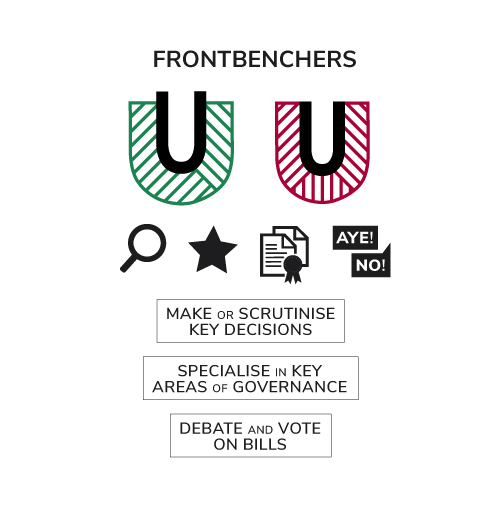In practical terms, what were the responsibilities of past parliamentarians who were appointed as a 'Minister without Portfolio'?
Role of frontbenchers in the Australian Parliament

Parliamentary Education Office (peo.gov.au)
Description
Ministers and shadow ministers are also known as 'frontbenchers' because they sit on the front bench of the Senate or House of Representatives. Ministers and shadow ministers:
- make and scrutinise key decisions
- specialise in key areas of governance
- debate and vote on bills.
This work is licensed under a Creative Commons Attribution-NonCommercial-NoDerivs 3.0 Unported License.
You are free to share – to copy, distribute and transmit the work.
Attribution – you must attribute the work in the manner specified by the author or licensor (but not in any way that suggests that they endorse you or your use of the work).
Non-commercial – you may not use this work for commercial purposes.
No derivative works – you may not alter, transform, or build upon this work.
Waiver – any of the above conditions can be waived if you get permission from the copyright holder.
Ministers are members of the Australian Government who have been allocated an area of responsibility for how Australia is run. This area of responsibility is known as a portfolio and some examples include health, finance, defence, and immigration. Ministers are responsible for developing government policy and putting government decisions into action.
In the past members of the government have been appointed as a minister without a specific portfolio. Examples include Stanley Bruce in 1932, Enid Lyons in 1949 and James Killen in 1982.
In the case of Stanley Bruce, Prime Minister Joseph Lyons appointed him to the role so he could represent the Prime Minister and Australian Government in London, without the limitations of a specific portfolio.
In the examples of Enid Lyons and James Killen, they were both given the responsibility of Vice-President of the Federal Executive Council. This is not a specific government portfolio but a role usually performed by a senior government minister who is part of Cabinet.
